19 Fastest Fish That Dominate The Ocean’s Currents
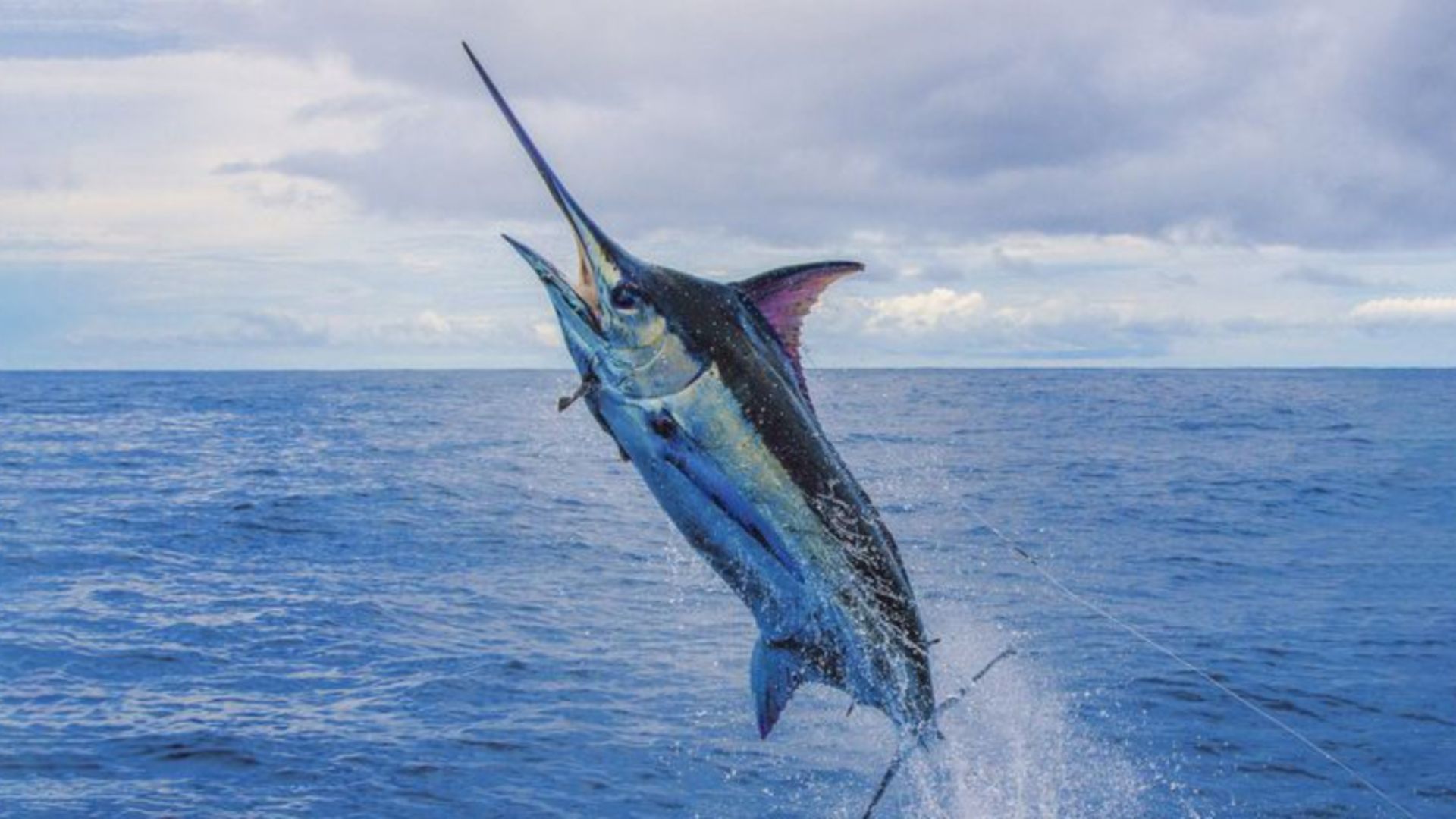
The ocean is home to some of the fastest creatures on the planet, and among them, certain fish dominate the waters with their remarkable speed. From sleek predators to agile swimmers, these fish have evolved to navigate the ocean’s currents with incredible efficiency.
Whether hunting prey or escaping danger, speed is essential to their survival. In this article, we’ll explore 19 of the fastest fish in the ocean and discover what makes them such powerful swimmers. Get ready to dive into the world of aquatic speedsters!
1. Wahoo
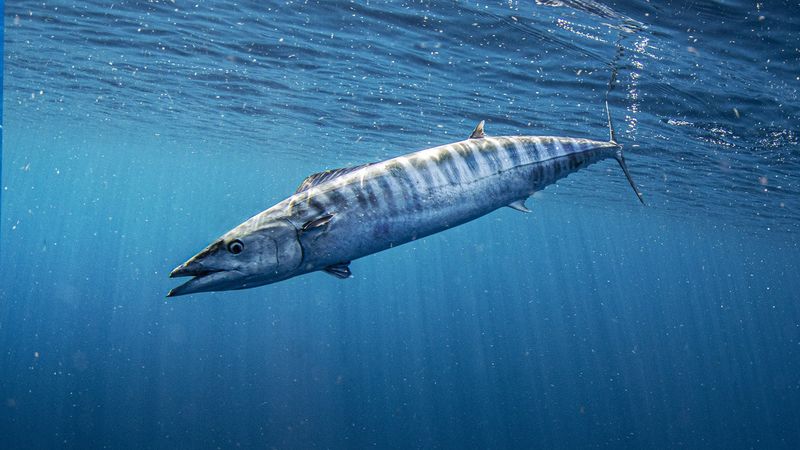
Wahoo are sleek, fast swimmers known for their speed, reaching up to 48 miles per hour. These fish are found in tropical and subtropical waters worldwide, particularly around coral reefs and in open ocean environments. Wahoo are often sought after by anglers for their thrilling speed and tasty flesh.
The wahoo’s body is long and slender, covered in small scales that reduce drag, allowing it to slice through water effortlessly. Its razor-sharp teeth and strong jaw are perfect for catching prey, including other fish and squid.
2. Mahi-Mahi
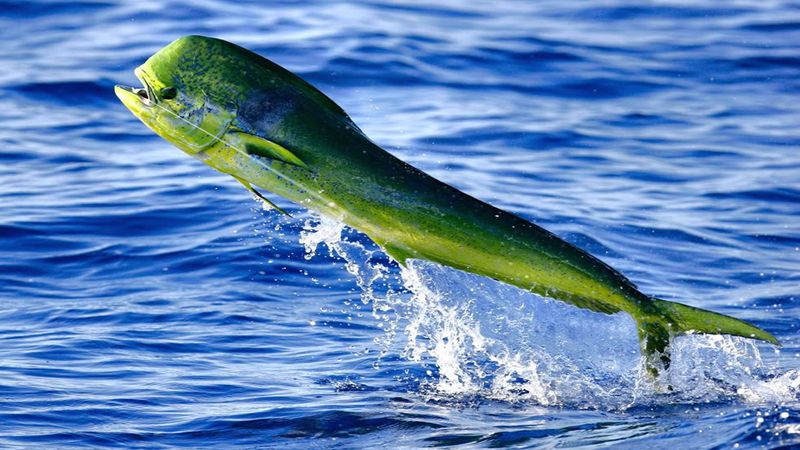
Mahi-mahi, also known as dolphin fish, are celebrated for their speed and vibrant coloration. These fish can reach speeds up to 40 miles per hour and are found in tropical and subtropical waters worldwide.
Mahi-mahi are known for their acrobatic jumps and rapid movements, making them a favorite among sport fishermen. Their bodies are elongated and compressed, with a dazzling display of colors ranging from bright greens to golds and blues.
3. Bonito

Bonito are small yet incredibly fast fish, capable of swimming at speeds up to 40 miles per hour. Found in the Atlantic, Pacific, and Indian Oceans, bonito are closely related to mackerel and tuna. Their speed and agility make them effective hunters, typically preying on small fish and invertebrates.
These fish have a distinctive, torpedo-shaped body that is perfectly adapted for swift movements through the water. Bonito are often seen leaping out of the water, especially when they are chasing prey or evading predators.
4. Swordfish
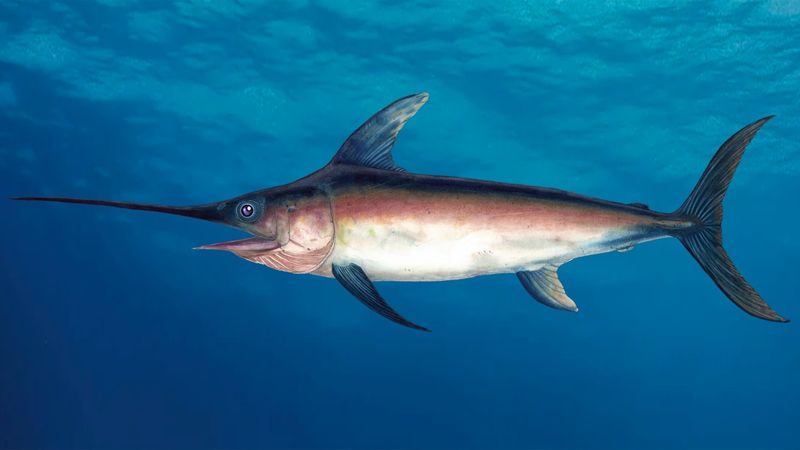
Swordfish are recognized for their long, flat bills that resemble swords, which they use to slash at their prey. These fish are powerful swimmers, reaching speeds of up to 60 miles per hour. Found in both temperate and tropical oceans globally, swordfish are primarily solitary creatures.
Their streamlined bodies and strong muscles allow them to make quick, agile movements, making them successful hunters. Swordfish are known to dive deep into the ocean, sometimes reaching depths of 2,100 feet, to find their preferred prey, which includes squid and various fish species.
5. Marlin
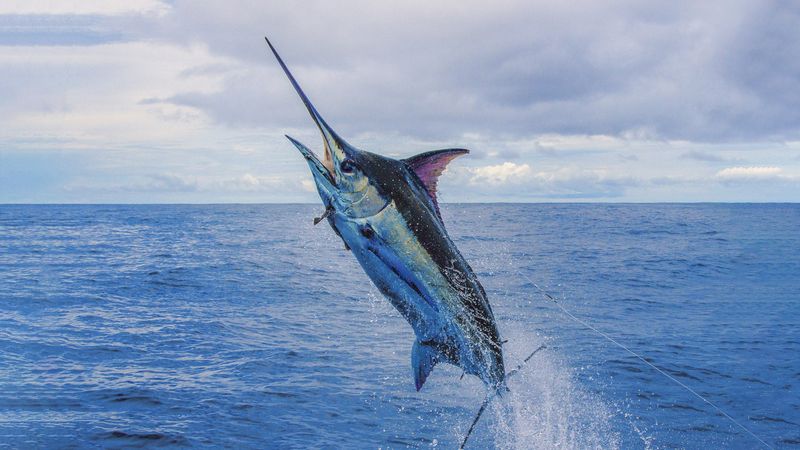
Marlin are among the ocean’s fastest and most iconic fish, capable of swimming up to 50 miles per hour. Their elongated bodies and spear-like upper jaws make them agile predators, often found in tropical and subtropical waters.
Marlin are known for their incredible endurance, engaging in long migrations across the oceans. These fish are highly sought after by sport fishermen due to their sheer size, speed, and fighting spirit.
6. Pacific Bluefin Tuna

The Pacific Bluefin Tuna is a marvel of speed and agility in the ocean’s vast expanse. Capable of reaching speeds up to 43 miles per hour, this fish is not only fast but also incredibly powerful. Its streamlined body and strong fins are perfectly adapted for swift movements, making it a formidable predator.
These tuna are often found in the Pacific Ocean, traveling vast distances across the waters. They play a critical role in the marine ecosystem and are highly valued for their meat. Fast and elusive, the Pacific Bluefin Tuna embodies the spirit of oceanic adventure.
7. Yellowfin Tuna

Yellowfin tuna are among the fastest of the tuna species, capable of reaching bursts of speed up to 47 miles per hour. These powerful fish are found in warm waters across the globe, from the Atlantic to the Pacific Oceans.
Known for their vibrant yellow fins and streamlined bodies, yellowfin tuna are highly prized by both commercial fisheries and sport fishermen. Their speed and agility make them effective hunters, preying on smaller fish, crustaceans, and squid.
8. Sailfish

Sailfish are renowned as the fastest fish in the ocean, capable of reaching speeds up to 68 miles per hour. Their sleek, torpedo-shaped bodies and long, bill-like snouts make them formidable predators in the open sea.
Often found in warm waters of the Atlantic and Pacific Oceans, sailfish use their incredible speed to hunt smaller fish such as sardines and anchovies. What sets sailfish apart is their spectacular dorsal fin, known as a sail, which they raise and lower to communicate with other sailfish and to corral prey.
9. Albacore Tuna
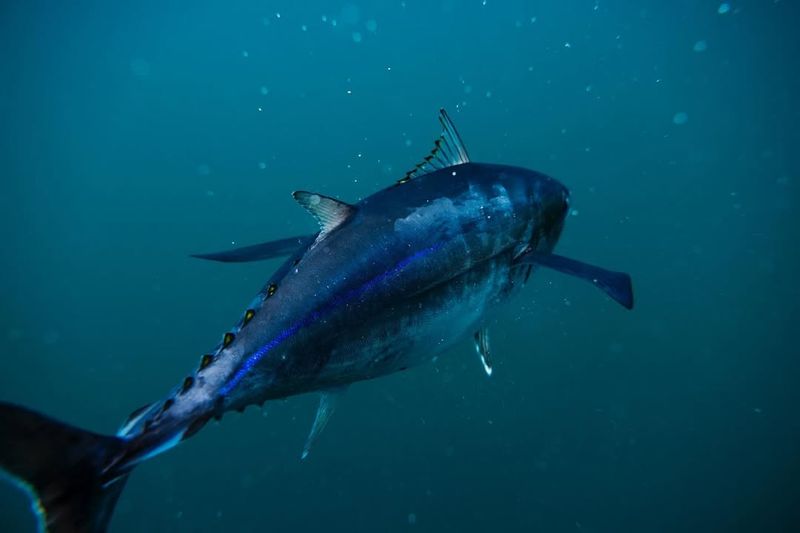
Often overshadowed by its more famous relatives, the Albacore Tuna is a true speedster in its own right. With its streamlined body and long pectoral fins, it glides through the ocean with ease, reaching speeds that can surprise many.
Known for its agility, this fish can make quick turns and swift bursts, making it a formidable hunter. In the vast blue, the Albacore travels in schools, often covering great distances during its migratory journeys. This constant motion not only aids in its survival but also makes it one of the ocean’s most efficient travelers.
10. Flying Fish

Flying fish are unique among the world’s fastest fish, reaching speeds up to 35 miles per hour, with the added ability to glide above the water’s surface. Found in warm ocean waters, these fish have evolved wing-like pectoral fins that allow them to soar through the air for distances up to 650 feet.
Their extraordinary “flight” is primarily a defense mechanism to escape predators such as mackerel and tuna. When pursued, flying fish gather speed underwater, then burst into the air, using their fins to glide. This remarkable adaptation allows them to evade danger and move quickly across the ocean.
11. Barracuda
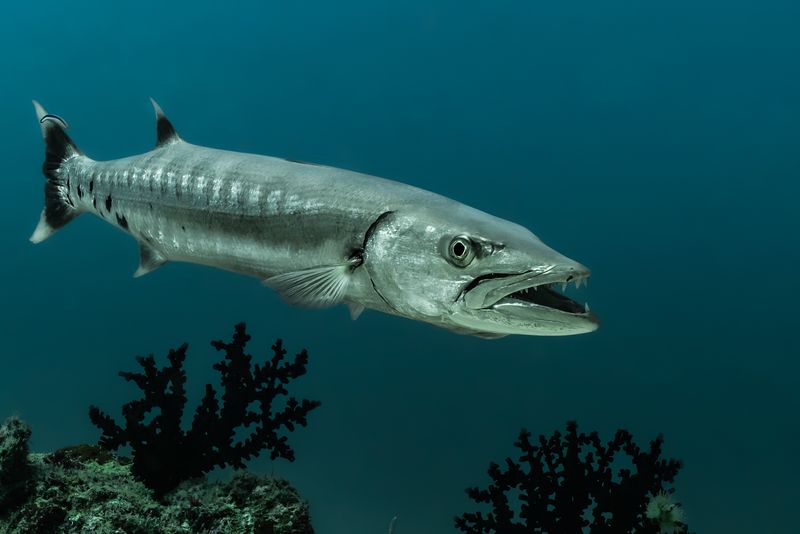
Barracudas are known for their speed and agility, capable of reaching speeds up to 36 miles per hour. These predatory fish are found in warm, tropical, and subtropical waters worldwide. Barracudas have long, slender bodies and a fearsome appearance, with sharp teeth and a pronounced underbite.
Their fearsome reputation is well-earned, as barracudas are opportunistic hunters, often using their speed to ambush prey. They are known to strike quickly and powerfully, making short work of fish, squid, and crustaceans.
12. Bluefin Tuna

Bluefin tuna are among the most robust and fastest creatures in the ocean, reaching speeds of up to 43 miles per hour. These large, muscular fish are found in both the Atlantic and Pacific Oceans and are highly valued for their meat, particularly in sushi cuisine.
Their ability to migrate across entire oceans demonstrates their endurance and strength. Bluefin tuna have a unique adaptation that allows them to maintain their body temperature above that of the surrounding water, giving them an advantage in colder environments.
13. Blackfin Tuna

The Blackfin Tuna, often overshadowed by its larger relatives, is a marvel of speed and agility. Living in the Atlantic, it’s renowned for its black dorsal and anal fins, distinguishing it from other tuna. This species reaches speeds of up to 46 miles per hour.
Its streamlined body and powerful tail make it a formidable hunter, swiftly chasing prey and evading predators. Blackfin Tuna are often found near the surface, where they hunt schools of smaller fish.
Despite their smaller size, these tuna play a crucial role in marine ecosystems, balancing predator-prey dynamics.
14. Rainbow Runner

Renowned for its iridescent colors, the Rainbow Runner is as swift as it is beautiful. Located in tropical and subtropical oceans, this fish is a marvel of aquatic engineering. With its elongated body and forked tail, it reaches speeds of 40 miles per hour.
Often seen in schools, Rainbow Runners are agile predators that feed on smaller fish and invertebrates. Their colorful appearance serves as camouflage against the ocean’s dazzling reflections.
Their presence is vital in maintaining the balance of the marine food web, showcasing nature’s intricate design.
15. Great Barracuda
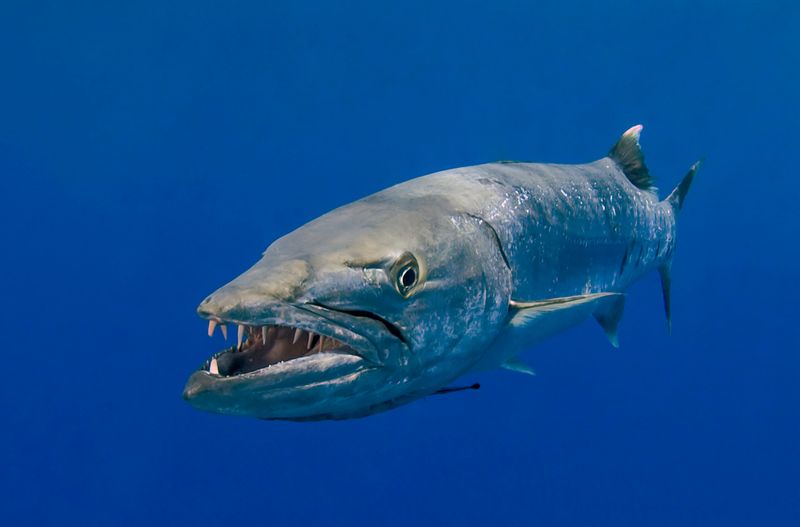
The Great Barracuda, with its fearsome appearance, is a master of speed and stealth. Found in tropical and subtropical oceans, it can accelerate rapidly, reaching speeds over 36 miles per hour.
Its long, slender body and pointed snout help it cut through water with minimal resistance. Equipped with sharp teeth, the Barracuda is a formidable predator, often ambushing prey with a sudden burst of speed.
Despite its reputation, the Great Barracuda plays an essential role in controlling fish populations, balancing the ecosystem.
16. Escolar

The enigmatic Escolar, often misunderstood, is a deep-sea sprinter. Known for its robust, torpedo-shaped body, this fish reaches impressive speeds in the depths of the Atlantic and Pacific Oceans.
Despite its dark, almost eerie appearance, the Escolar is a skillful predator, feeding on squid and smaller fish. Its speed and agility allow it to navigate the complex deep-sea environment efficiently.
While not as well-known as other speedsters, the Escolar remains a fascinating part of the ocean’s diverse ecosystem, showcasing nature’s adaptability.
17. Atlantic Mackerel
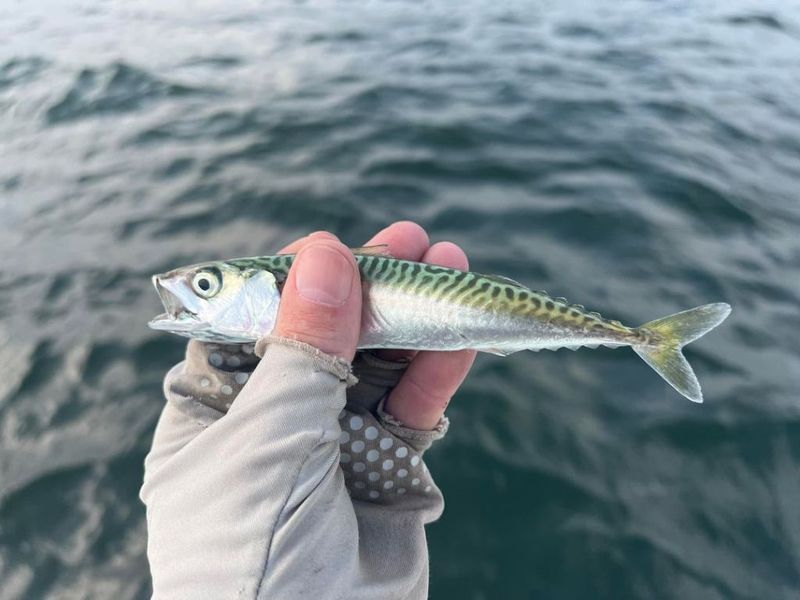
The Atlantic Mackerel, a staple in many diets, is also a remarkable swimmer. Found in the North Atlantic, these fish are known for their quick bursts of speed, reaching up to 21 miles per hour.
Their streamlined bodies and vibrant patterns make them efficient travelers in large schools. The Mackerel’s speed helps it escape predators and catch plankton and small fish.
Their role in the food chain is critical, linking various marine organisms and supporting commercial fisheries worldwide. The Atlantic Mackerel’s speed and utility make it a vital ocean inhabitant.
18. Black Marlin

Ever seen a fish fly? The Black Marlin, one of the ocean’s fastest, achieves speeds up to 82 mph. Known for its powerful leaps, it can cover vast distances through the air, using its robust body and elongated bill.
With a muscular build and swift movements, this fish is a favorite among deep-sea anglers. Its agility in water is matched by its endurance, making it a formidable opponent when hooked.
The Black Marlin’s speed isn’t just for show; it uses this ability to catch prey with precision, often surprising its targets with sudden bursts of speed.
19. Skipjack Tuna

Small but mighty, the Skipjack Tuna can reach speeds of up to 40 mph. Its streamlined body allows it to dart through ocean currents with ease. This fish’s speed is not only a defense mechanism but also a tool for hunting.
In the vast expanse of the ocean, the Skipjack Tuna stands out with its determination and adaptability. Its silvery scales shimmer, reflecting the sun’s rays as it navigates the sea.
This tuna is a true ocean traveler, migrating thousands of miles across the globe in search of food and warmer waters.






